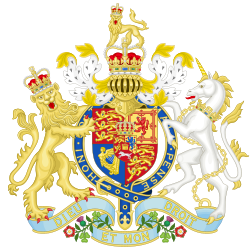A liberty was an English and Irish geographic unit originating in the Middle Ages, traditionally defined as an area in which regalian right was revoked and where the land was held by a mesne lord (i.e., an area in which rights reserved to the king had been devolved into private hands). It later became a unit of local government administration. [1]
Contents
Liberties were areas of widely variable extent which were independent of the usual system of hundreds and boroughs for a number of different reasons, usually to do with peculiarities of tenure. Because of their tenurial rather than geographical origin, the areas covered by liberties could either be widely scattered across a county or limited to an area smaller than a single parish: an example of the former is Fordington Liberty, and of the latter, the Liberty of Waybayouse, both in Dorset.
In northern England, the liberty of Bowland was one of the larger tenurial configurations covering some ten manors, eight townships and four parishes under the sway of a single feudal lord, the Lord of Bowland, whose customary title is Lord of the Fells. [2] [3] Up until the Tenures Abolition Act 1660 (12 Cha. 2. c. 24), such lords would have been lords paramount.
| Liberties Act 1836 [a] | |
|---|---|
| Act of Parliament | |
 | |
| Long title | An Act for extinguishing the Secular Jurisdiction of the Archbishop of York and the Bishop of Ely in certain Liberties in the Counties of York, Nottingham, and Cambridge. |
| Citation | 6 & 7 Will. 4. c. 87 |
| Territorial extent | United Kingdom |
| Dates | |
| Royal assent | 17 August 1836 |
| Commencement | 17 August 1836 [b] |
| Repealed | 27 May 1976 |
| Other legislation | |
| Amended by | |
| Repealed by | Statute Law (Repeals) Act 1976 |
Status: Repealed | |
| Text of statute as originally enacted | |
The Liberties Act 1836 [a] (6 & 7 Will. 4. c. 87) ended the temporal jurisdiction of the Archbishop of York and the Bishop of Ely in several liberties, and the Liberties Act 1850 (13 & 14 Vict. c. 105) permitted the merging of liberties in their counties. By 1867, only a handful remained: Ely, Havering-atte-Bower, St Albans, Peterborough, Ripon and Haverfordwest. St Albans was subsequently joined to the county of Hertfordshire in 1875.
The Local Government Act 1888 (51 & 52 Vict. c. 41) led to the ending of the special jurisdictions in April 1889: the Isle of Ely and Soke of Peterborough became administrative counties, while the three remaining liberties were united to their surrounding counties.